1. Fargo, 1981-1983
1.1. Life Stories collected
1.1.1. "Surveys of representative samples of pro-life and pro-choice activists have not established any clear correlations between such activity and conventional social categories." (236)
1.1.2. THEMES
1.1.2.1. preservation of female nurturance
1.1.2.1.1. PC: natural
1.1.2.1.2. PL: achieved
1.2. activists are mainly white, middle class, and female
1.2.1. seems to fall along generational lines
1.2.1.1. most pro choice activists born in the 1940s/reached adulthood in the 60s
1.2.1.2. pro life fell into two groups
1.2.1.2.1. born in the 1920s/most active in the 1970s
1.2.1.2.2. born int he 1950s/most active in the 1980s
1.2.2. "Activists' views on abortion are linked to a very diverse range of moral, ethical, and religious questions" (239)
2. "struggle over abortion rights has become a contested domain for control over the constellation of meanings attached to reproduction in America" (235)
2.1. isn't necessarily limited to only two "fixed and irreconcilable" sides to the argument
2.2. What draws women to opposing movements?
2.2.1. "biological factors," -- a woman's sexual and reproductive experiences and her interpretation of them.
2.2.2. the moment in time/current culture
3. Procreation Stories: life stories; narrative fragments of more comprehensive life histories (236)
3.1. reveal how women use activism to frame/interpret historical and biographical experiences
3.2. create provisional solutions for the place of reproduction/motherhood in contemporary America.
3.3. illuminate how dimensions of "private" experience intersect with social/historical conditions
3.4. reveal how embracing a position emerges (personal reproductive and generational experiences)
4. Abortion activism seems to serve as a frame for action and interpretation of the self in relation to the world (237)
5. examines how American conceptsof gender are being redefined by female activists
5.1. New node
5.2. part of two interrelated areas of research:
5.2.1. the cultural and social meanings of gender, reproduction, and sexuality;
5.2.2. and arenas of conflict in contemporary American culture.
6. The pro-life narratives--
6.1. narrative strategy stresses continuities between generations,
6.2. 1st cohort
6.2.1. HELEN,
6.2.1.1. Raised in one of Fargo's elite Lutheran families,
6.2.1.2. fulfilled her mother's dream by attending an eastern "seven sisters' school" and going on for a masters degree in social work
6.2.1.3. married after WW2, returned to Fargo, and had three children.
6.2.1.4. led the life appropriate for the wife of a local retail magnate.
6.2.1.5. until recently, a pro-choice advocate, but her mother disapproved
6.2.1.6. When the clinic opened in 1981, Helen was asked by a member of one of her prayer groups to join the pro-life coalition against the clinic, saw her "conversion" to the right-to-life movement as a repudiation of a prior sense of self that had separated her from her mother, who recently died.
6.2.2. SHIRLEY, a 63-year-old widow,
6.2.2.1. part-time nurse,
6.2.2.2. mother of six,
6.2.2.3. a well-known member of Fargo's comfortable middle class.
6.2.3. many recently-widowed and were facing the loss of children from their immediate lives as well.
6.3. 2nd cohort
6.3.1. women born between 1952-62
6.3.2. SALLY NORDSEN--
6.3.2.1. went to college and married soon after her graduation;
6.3.2.2. she worked for seven years as a social worker.
6.3.2.3. In her late 20s, she got pregnant and decided to leave the work force in order to raise her children.
6.3.2.4. keenly aware that the choice is at odds with the feminist images seen in the popular media (young, single, upwardly mobile corporate women)
6.3.2.5. describes her former "liberated" ideas about sexuality as a repression of her true self
6.3.3. ROBERTA
7. The pro-choice narratives --
7.1. women activists who organized to defend the Fargo abortion clinic;
7.2. most were born between 1942-52.
7.3. range of backgrounds in natal families and current household status
7.4. all influenced as young adults by the social unrest & women's movement of the late 1960s/early 1970s
7.5. 14 life stories collected
7.5.1. KAY BELLEVUE, an abortion rights activist since 1972.
7.5.1.1. grew up in the Midwest,
7.5.1.2. the oldest of seven children.
7.5.1.3. father was a Baptist minister; mother worked as a homemaker and part-time public school teacher.
7.5.1.4. active in a local organizations: specifically la leche - a group where one stands an equal chance of running into a pro-life or pro-choice woman.
7.5.1.5. had abortion when became pregnant with 5th child (4th child was 18 months old)
7.5.1.6. resents the casting of prochoice activists by right-to-lifers as not only "antifamily" but "godless" as well.
7.5.2. JANICE SUNDSTROM,
7.5.2.1. shortly after she was born, parents moved to Fargo with her and left all the other children with relations in IL
7.5.2.2. "had the experience of being the only child at a time when they had far too many children to deal with."
7.5.2.3. raised Catholic, strongly committed, but chose birth control after 2nd pregnancy within a year. this break from church teachings gave her the ability to rethink her stance on abortion too
7.5.2.4. "midwestern feminism."
7.5.2.4.1. important to recognize:
7.5.2.4.2. disturbed by cultural currents that promote,
